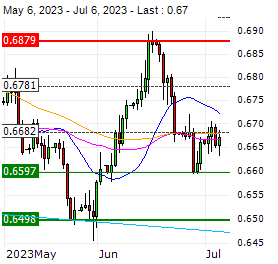Publisher: Maaal International Media Company
License: 465734
European bond yields track US gains on hawkish Fed minutes
European bond yields rose on Thursday with moves at the longer end of the curve catching up with the recent climb by two-year yields, mirroring a shift higher in U.S. rates after hawkish minutes from the Federal Reserve’s latest meeting, Reuters reported.
Germany’s 10-year yield, the benchmark for the euro zone, was up 4 basis points (bps) at 2.52%, around a three-week high, and near the top of the range in which it has traded in recent months.
Italy’s 10-year yield, the benchmark for the European periphery , climbed as well and was last up 6 basis points at 4.23%, also around a three-week high.
اقرأ المزيد
“Yesterday, we got the Fed minutes that were on the hawkish side and that explains where we’re opening this morning,” said Jan von Gerich, chief analyst at Nordea.
Minutes of the Federal Reserve’s June meeting, released on Wednesday, showed the bulk of policy makers expected they would need to tighten policy further, though they held rates steady at that meeting.
That contributed to a rise in U.S. yields, and the U.S. 10-year Treasury yield climbed as high as 3.969% in European trading on Thursday, its highest since early March when turmoil in the U.S. banking sector sent investors rushing to the safety of government bonds.
Bonds’ yields move inversely to their prices, and prices tumbled in 2022 and the early part of this year as central banks around the world aggressively tightened monetary policy.
Markets are currently priced for two more 25-basis-point rate hikes from the European Central Bank in this cycle, one at the ECB’s meeting later this month, while the move later in the year is a little more up for grabs.
“There are no major data points for the rest of this week in the euro area, but the data has been coming in on the weak side, and so the focus is on how big is the loss of economic momentum and what that means for the inflation numbers and in turn the ECB,” said von Gerich.
He said a rate rise at the ECB’s July meeting was “a done deal”.
U.S. services sector data today is in focus by markets, as well as crucial payroll numbers on Friday.
Shorter-dated European yields also rose a little. Germany’s two-year yield was up 3 bps at 3.32%, and Italy’s up 4 bps at 3.94%.
That meant the German 2-10 yield curve became slightly less inverted at -81.3 bps. It was at -90.8 bps on Monday, its most inverted in over thirty years.









